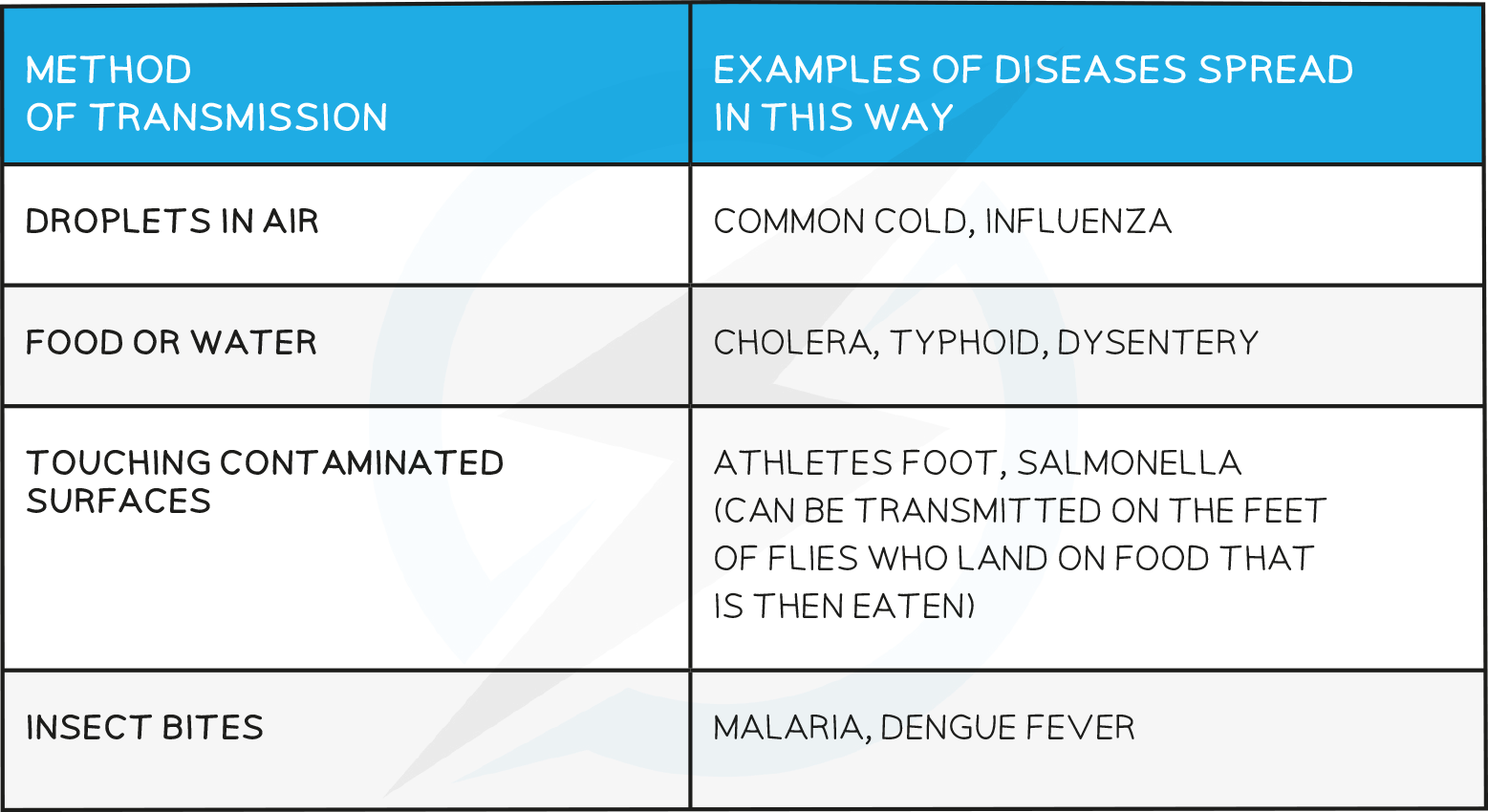- 翰林提供学术活动、国际课程、科研项目一站式留学背景提升服务!
- 400 888 0080
CIE IGCSE Biology: 复习笔记:10.1.1 Pathogens & Barriers
CIE IGCSE Biology: 复习笔记:10.1.1 Pathogens & Barriers
Pathogens
- A pathogen is a disease-causing organism
- Pathogens are passed on from one host to another and therefore the diseases they cause are known as transmissible diseases
- Pathogens can be passed on from host to host in different ways, including:
- Direct contact - the pathogen is passed directly from one host to another by transfer of body fluids such as blood or semen (eg HIV, gonorrhoea, hepatitis B & C)
- Indirect contact - the pathogen leaves the host and is carried in some way to another, uninfected individual
Methods of Transmission Table

The Body Defences
There are 3 main ways in which the body defends itself against disease:
Mechanical barriers – structures that make it difficult for pathogens to get past them and into the body
a) Skin - covers almost all parts of your body to prevent infection from pathogens. If it is cut or grazed, it immediately begins to heal itself, often by forming a scab
b) Hairs in the nose - these make it difficult for pathogens to get past them further up the nose so they are not inhaled into the lungs
Chemical barriers – substances produced by the body cells that trap / kill pathogens before they can get further into the body and cause disease
a) Mucus - made in various places in the body, pathogens get trapped in the mucus and can then be removed from the body (by coughing, blowing the nose, swallowing etc)
b) Stomach acid - contains hydrochloric acid which is strong enough to kill any pathogens that have been caught in mucus in the airways and then swallowed or have been consumed in food or water
Cells - different types of white blood cell work to prevent pathogens reaching areas of the body they can replicate in
a) By phagocytosis - engulfing and digesting pathogenic cells
b) By producing antibodies - which clump pathogenic cells together so they can’t move as easily (known as agglutination) and releasing chemicals that signal to other cells that they must be destroyed
转载自savemyexams

早鸟钜惠!翰林2025暑期班课上线

最新发布
© 2025. All Rights Reserved. 沪ICP备2023009024号-1








